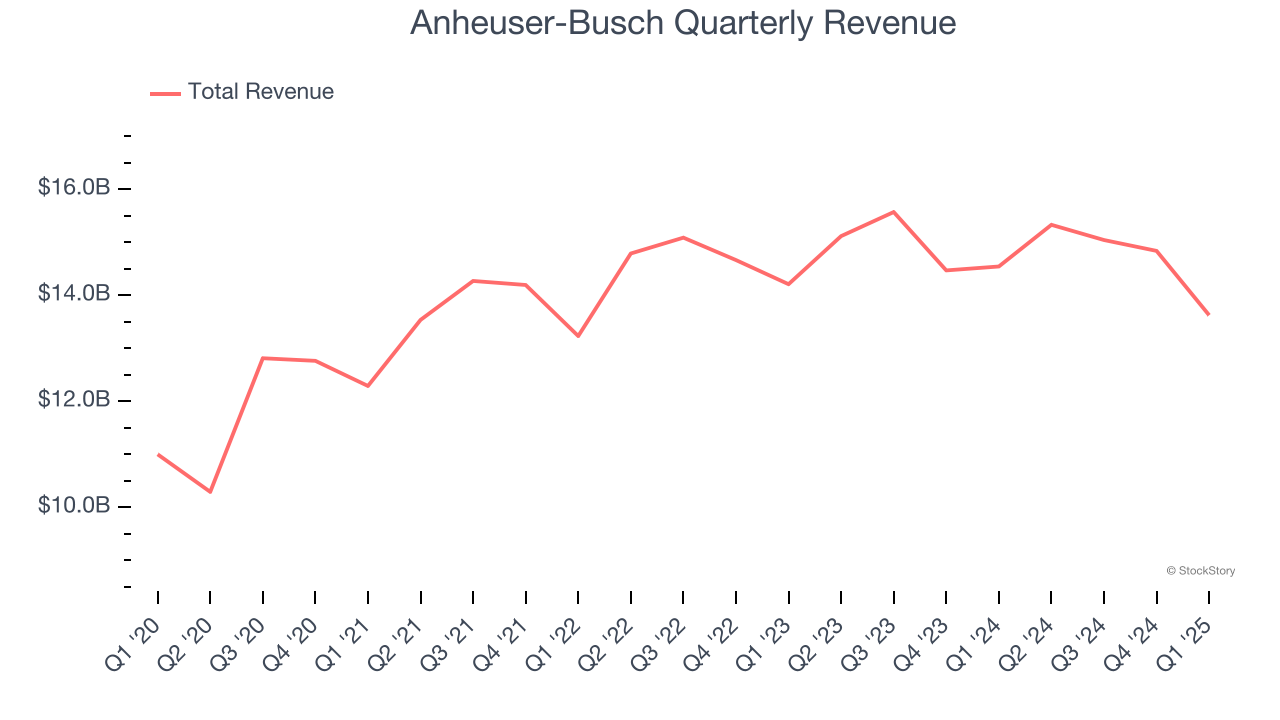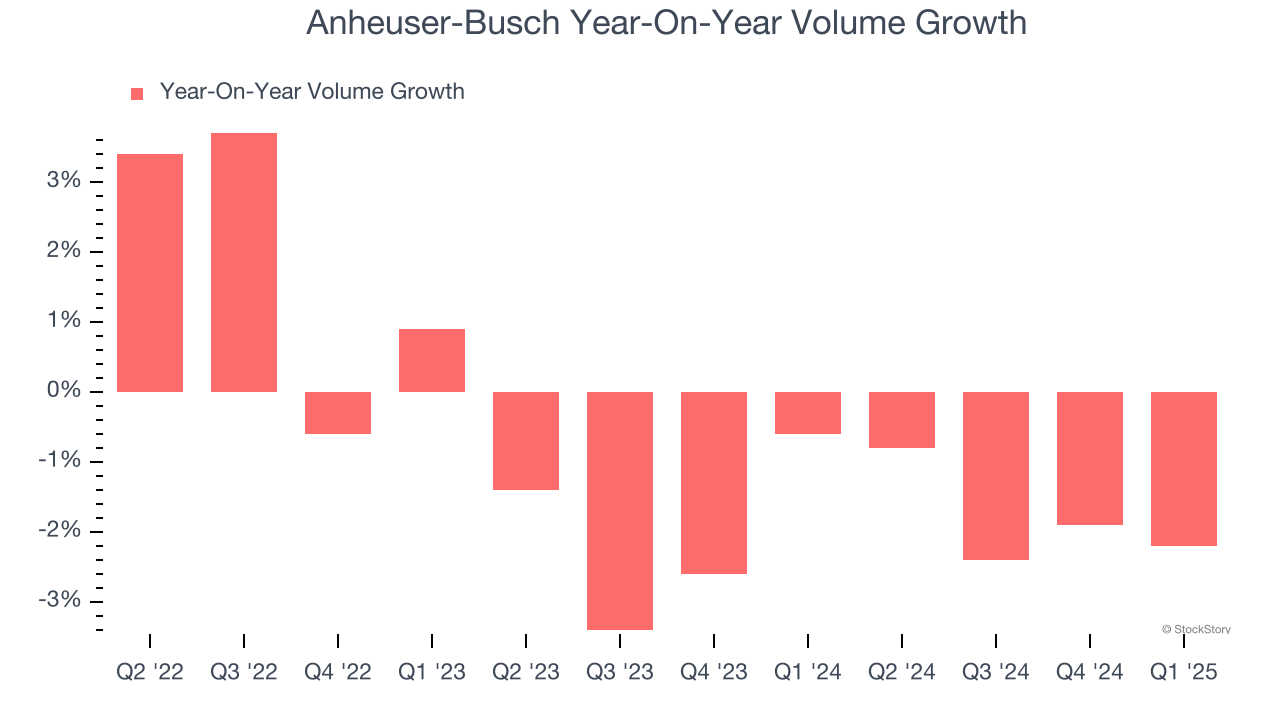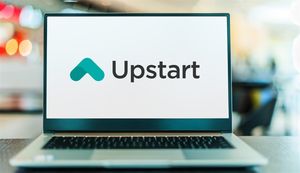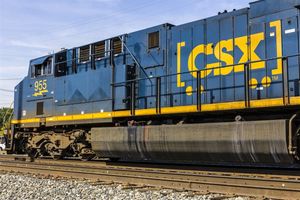
Beer powerhouse Anheuser-Busch InBev (NYSE: BUD) missed Wall Street’s revenue expectations in Q1 CY2025, with sales falling 6.3% year on year to $13.63 billion. Its GAAP profit of $0.81 per share was 16% below analysts’ consensus estimates.
Is now the time to buy Anheuser-Busch? Find out by accessing our full research report, it’s free.
Anheuser-Busch (BUD) Q1 CY2025 Highlights:
- Revenue: $13.63 billion vs analyst estimates of $13.81 billion (6.3% year-on-year decline, 1.3% miss)
- EPS (GAAP): $0.81 vs analyst expectations of $0.96 (16% miss)
- Adjusted EBITDA: $4.86 billion vs analyst estimates of $4.81 billion (35.6% margin, 0.9% beat)
- Operating Margin: 26.3%, up from 24.9% in the same quarter last year
- Organic Revenue fell 2.2% year on year (2.6% in the same quarter last year)
- Sales Volumes fell 2.2% year on year (-0.6% in the same quarter last year)
- Market Capitalization: $113.7 billion
Company Overview
Born out of a complicated web of mergers and acquisitions, Anheuser-Busch InBev (NYSE: BUD) boasts a powerhouse beer portfolio of Budweiser, Stella Artois, Corona, and local favorites around the world.
Sales Growth
A company’s long-term sales performance is one signal of its overall quality. Even a bad business can shine for one or two quarters, but a top-tier one grows for years.
With $58.85 billion in revenue over the past 12 months, Anheuser-Busch is one of the most widely recognized consumer staples companies. Its influence over consumers gives it negotiating leverage with distributors, enabling it to pick and choose where it sells its products (a luxury many don’t have). However, its scale is a double-edged sword because there are only so many big store chains to sell into, making it harder to find incremental growth. For Anheuser-Busch to boost its sales, it likely needs to adjust its prices, launch new offerings, or lean into foreign markets.
As you can see below, Anheuser-Busch’s sales grew at a sluggish 2.1% compounded annual growth rate over the last three years as consumers bought less of its products. We’ll explore what this means in the "Volume Growth" section.

This quarter, Anheuser-Busch missed Wall Street’s estimates and reported a rather uninspiring 6.3% year-on-year revenue decline, generating $13.63 billion of revenue.
We also like to judge companies based on their projected revenue growth, but not enough Wall Street analysts cover the company for it to have reliable consensus estimates. This signals Anheuser-Busch could be a hidden gem because it doesn’t get attention from professional brokers.
Software is eating the world and there is virtually no industry left that has been untouched by it. That drives increasing demand for tools helping software developers do their jobs, whether it be monitoring critical cloud infrastructure, integrating audio and video functionality, or ensuring smooth content streaming. Click here to access a free report on our 3 favorite stocks to play this generational megatrend.
Volume Growth
Revenue growth can be broken down into changes in price and volume (the number of units sold). While both are important, volume is the lifeblood of a successful staples business as there’s a ceiling to what consumers will pay for everyday goods; they can always trade down to non-branded products if the branded versions are too expensive.
To analyze whether Anheuser-Busch generated its growth from changes in price or volume, we can compare its volume growth to its organic revenue growth, which excludes non-fundamental impacts on company financials like mergers and currency fluctuations.
Over the last two years, Anheuser-Busch’s average quarterly sales volumes have shrunk by 1.9%. This decrease isn’t ideal as the quantity demanded for consumer staples products is typically stable. Luckily, Anheuser-Busch was able to offset fewer customers purchasing its products by charging higher prices, enabling it to generate 2.7% average organic revenue growth. We hope the company can grow its volumes soon, however, as consistent price increases (on top of inflation) aren’t sustainable over the long term unless the business is really really special.

In Anheuser-Busch’s Q1 2025, sales volumes dropped 2.2% year on year. This result represents a further deceleration from its historical levels, showing the business is struggling to move its products.
Key Takeaways from Anheuser-Busch’s Q1 Results
It was good to see Anheuser-Busch narrowly top analysts’ EBITDA expectations this quarter. On the other hand, its EPS missed significantly and its revenue fell slightly short of Wall Street’s estimates. Overall, this was a weaker quarter, but the stock traded up 2.3% to $67.04 immediately after reporting.
So do we think Anheuser-Busch is an attractive buy at the current price? If you’re making that decision, you should consider the bigger picture of valuation, business qualities, as well as the latest earnings. We cover that in our actionable full research report which you can read here, it’s free.





